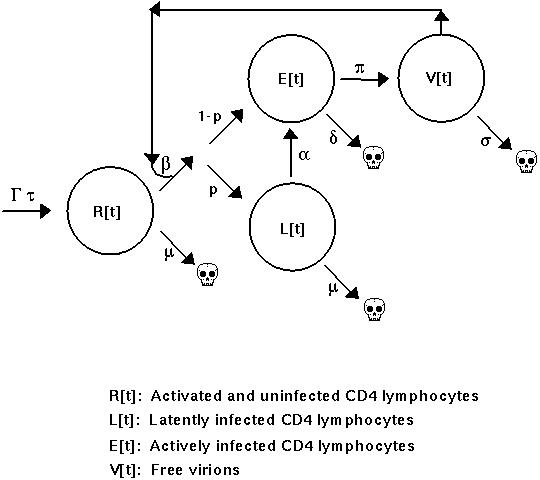
In this course, you will learn some new mathematical techniques and some new facts about biology, but the course is primarily intended to improve your ability to understand and construct mathematical models as they are used in biology.
For most biologists, mathematics is a foriegn language. To learn a foriegn language takes time and practise -- which we'll do a lot of in this class. In the end, what matters most is not that you have any particular formulae memorized but rather that you are proficient in the language of mathematics. That means that you are able to understand what is meant by a mathematical formula used in a biological context and that if you don't know how to solve something, you know where to look.
A large proportion of the mathematics used in biology involves algebra and basic calculus, but applied in new ways. In addition, matrix algebra, probability theory, and statistics are commonly used. This course will introduce you to some matrix theory and some probability theory, but we will not deal with statistical issues; Biology 300 should be taken to give you the statistical background that you will need.
As biologists, we are very fortunate to live in the age of computers. It is no longer necessary to be math wizs to solve fairly sophisticated mathematical models. For those models that cannot be solved, one can always run simulations and I encourage you to learn a programming language. In this class, however, we will use a software package called "Maxima", which is able to do pretty much all the math that you have ever done in your lives and much more (in some of my lectures, I will use a professional version called Mathematica).
The advantage of using a software package like Maxima or Mathematica is that it frees us up -- for instance, we no longer have to memorize tables of integrals. Maxima is able to solve many of the functions that can be solved. Instead we can concentrate on what mathematics we want to do: posing a question, constructing a model, and analysing specific mathematical equations. Our task in this class is to practise doing just that.
As an example, we'll discuss papers in a recent issue of Science, discussing how mathematical models entered into these studies.
We'll also discuss an older Science paper by Phillips (1996) that illustrates the type of modeling you will be able to build and analyse using the tools of this course [download example code in maxima or as a PDF].

